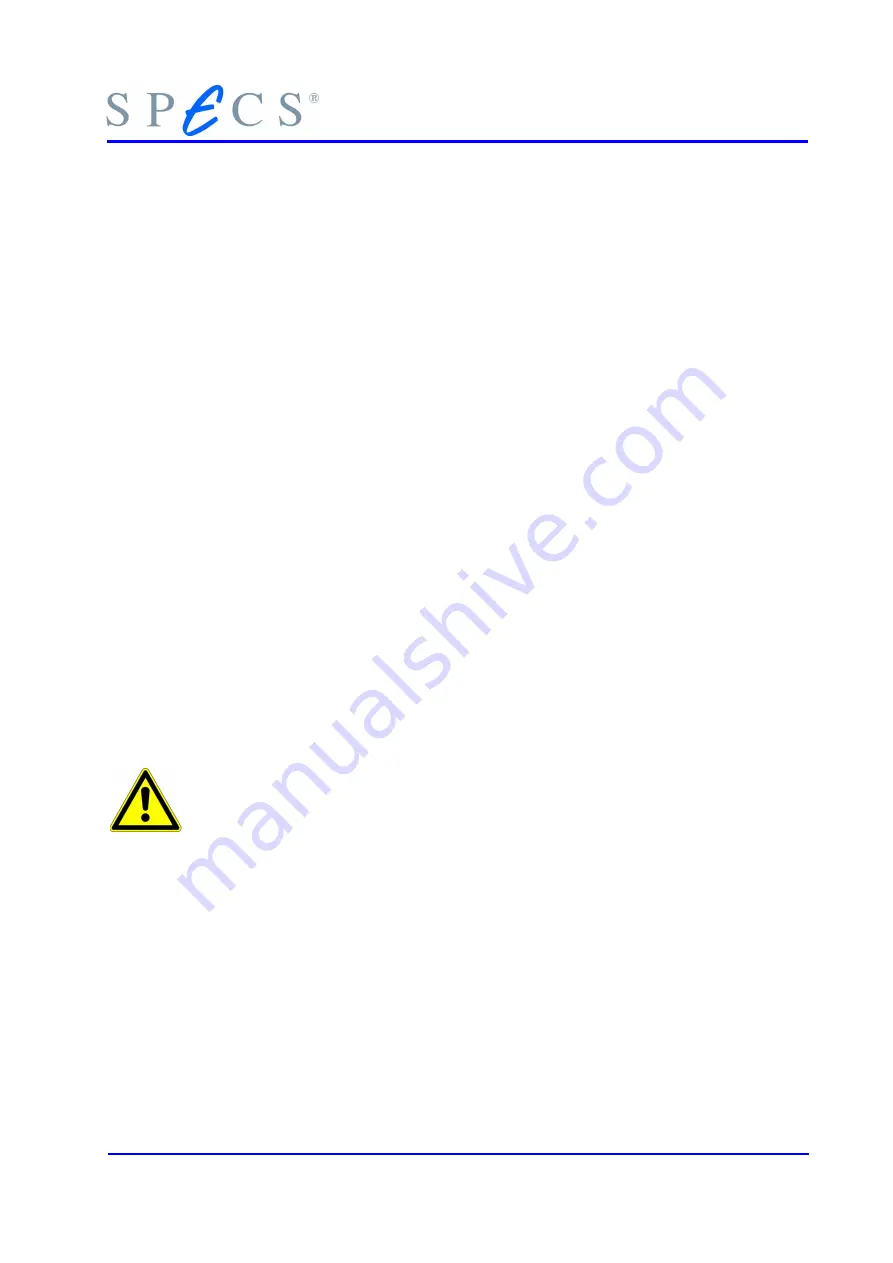
Evaporation from Rod
Set the voltage to 1500 V and gradually increase the filament current in order to in-
crease the electron emission current. Allow the emission current to increase by just a
few mA at a time. Then wait a time to allow the temperature increase to stabilise.
It is very important that the power is not increased too quickly. If the power is increased
too quickly, it is possible to overshoot the desired operating position and possibly dam-
age the rod or even the evaporator. This can occur because as the electron beam power
is increased, the temperature of the rod increases, this in turn reduces the heat loss
from the filament, which increases the filament temperature and therefore the emitted
electron current and so the electron beam heating is further increased. To avoid this
runaway effect, allow plenty of time when warming up the rod for the temperature to
stabilise before further increasing the emission current.
In all cases it is desirable to have a quartz crystal microbalance to monitor the evapora-
tion rate. The monitor should be capable of making rate measurements and not just ac-
cumulated thickness and should have a resolution of 0.1 nm/s or better. It is only really
by monitoring the actual deposition rates that the required operating conditions can be
found.
As a general guide, thin 2 mm rods are likely to require emission currents in the range
10 mA -50 mA to achieve good evaporation rates. 200 mA applied to a 4 mm thick rod
of carbon will produce high deposition rates in the nm/s range. 90 mA of emission cur-
rent will be enough to evaporate a 4 mm rod of niobium at 0.01 nm/s.
IMPORTANT
The evaporator is capable of evaporating a huge range of materials from thick
rods of refractory materials requiring high e-beam powers to small crucibles full
of high vapour pressure material requiring very little power. For this reason care
must be taken not to exceed the power required for a particular material.
For all materials there will be a maximum achievable evaporation rate, which will be
reached when the local vapour pressure around the tip of the rod or mouth of the cru-
cible is high enough for the HV to generate an arc through the vapour. This will be no-
ticeable as a pulse in the emission current or in heavier cases by the blowing of an HV
fuse.
11
Summary of Contents for EBE-1
Page 1: ...EBE 1 Electron Beam Evaporator 1 11...
Page 8: ...Inspection 4 EBE 1...
Page 22: ...Operation 18 EBE 1...
Page 28: ...Drawings 24 EBE 1 Figure 4 Evaporator details...
Page 30: ...List of Figures II EBE 1...
Page 32: ...List of Tables IV EBE 1...







































